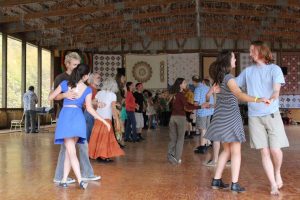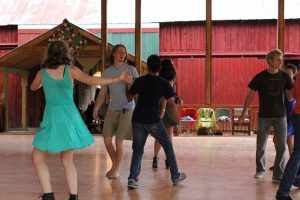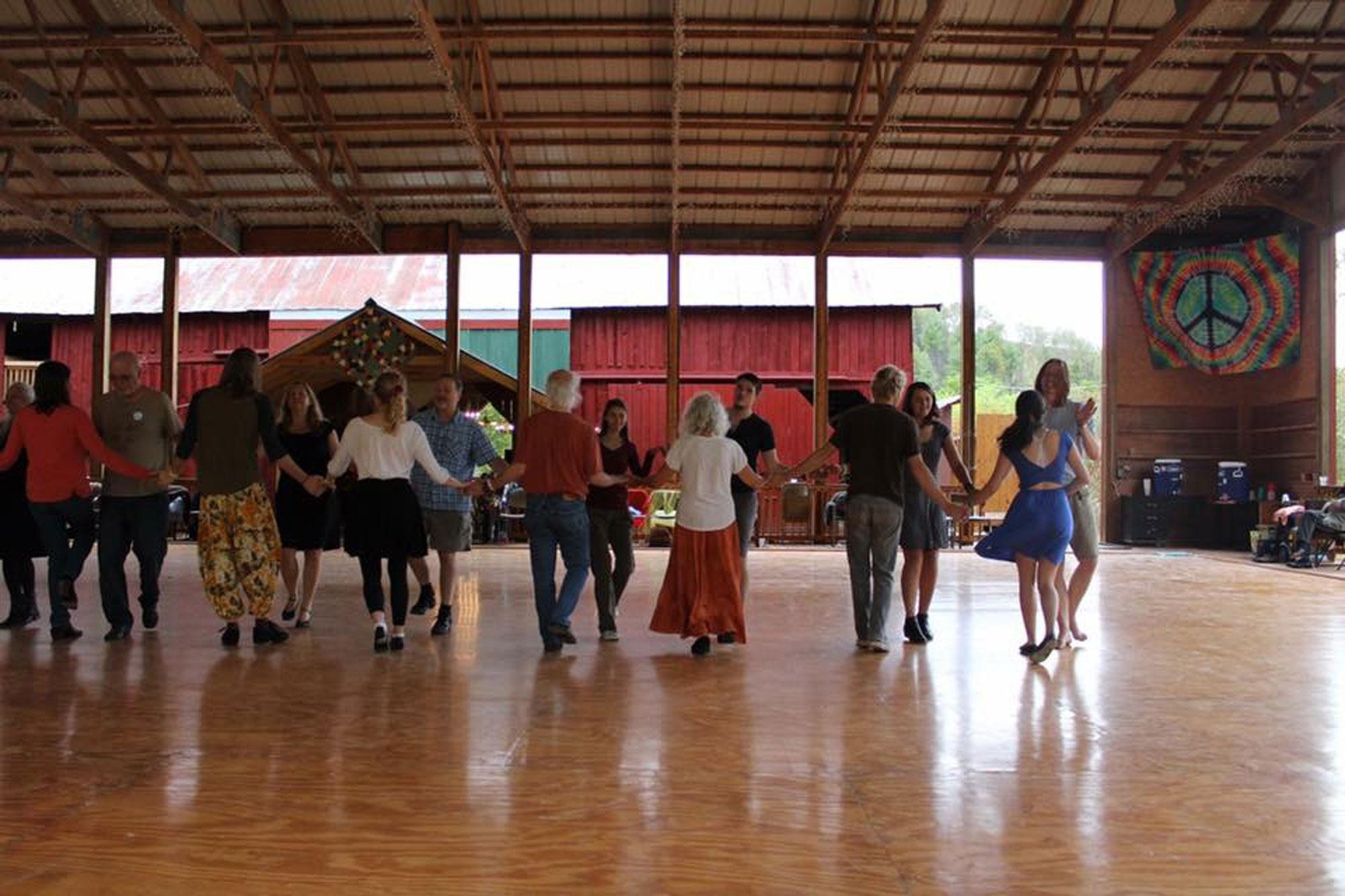It’s not uncommon for Appalachian State’s Legends to be filled with people dancing. However, on certain Friday nights, the usual mob of people dancing to a band on stage is replaced by a different scene. Instead, a small string band sits at one end of the dance floor, and a caller directs long lines of dancers as they coordinate their moves and swing their partners.
These Friday nights at Legends are for contra dances, and they occur about once a month throughout the school year. The dances are hosted by the Appalachian Heritage council, which is part of the Appalachian Popular Programming Society.
Mallory Vannoy, chairperson of the Appalachian Heritage Council and senior hospitality and tourism management major, said that contra dancing is somewhat of a combination of square dancing and line dancing. Long lines composed of groups of four stretch down the dance floor. Each dancer has a partner, and as the dance progresses, the partners make their way down the line, dancing with other pairs along the way.
A contra dance will have a live band, which usually plays Appalachian old-time music, and a caller. Each individual dance is slightly different. The caller typically runs through the moves before the dance begins, and then calls out each move as they happen during the dance.
“I was extremely intimidated the first time I went to a dance,” said Jonathan Brechbiel, a freshman communication studies major. “But I had a lot of fun. Everyone kind of helps you out with it, like there’s no shaming you if you mess up, even if you’re not good at dancing.”
Besides the dances at Legends, there are a number of regular contra dances throughout the High Country. The Boone Contra Dancers, a community group, hosts monthly dances at the Apple Barn in Valle Crucis for most of the year, and at the Old Cove Creek School Gym in Sugar Grove during the winter months.
The regular Boone contra community, which includes both community members and App State students, attends both the Legends and the Apple Barn dances, Vannoy said. A large number of beginners attend the dances at Legends, but beginners are welcome at all dances.
“I feel like there are more experienced people at the other dances, so it’s almost easier to be a beginner there, because the other people can teach you,” Vannoy said. “It is intimidating sometimes to be a beginner with all the experienced dancers, but they’re very helpful and willing to teach you.”
There are also some special dances throughout the year, such as Boonedoggle, a 12-hour contra dance which was hosted by the Boone Contra Dancers on Oct. 8, and a Costume Contra at Legends the Friday before Halloween. The Appalachian Heritage Council also usually hosts Rushfest, a contra dance set to music performed by a DJ, in the spring semester.
“Theming the contra dances always seems to go well,” Vannoy said. “The Costume Contra always brings a lot of students. There were a ridiculous amount of beginners there.”
The Appalachian Heritage Council exists to bring events to campus that are traditional to the Appalachian region. The council also hosts the annual Old Time Fiddlers Convention, which draws in people from all over North Carolina and neighboring states, in the spring semester, as well as Heritage Week in the fall.
“Although contra dances aren’t super traditional – square dances are a lot more traditional than contra dances – there’s a demand for contras,” Vannoy said. “And we’ve got a good system for bringing contra dances, and people keep coming to them.”
The dances are also good exercise and require a lot of focus, Brechbiel said, and are a fun, unique way to spend an evening, especially for college students.
Contra dances also offer an opportunity for students to meet new people, Vannoy said. They are very social dances, so dancers get to interact with a lot of different people throughout the night.
“It’s like social and physical at the same time,” Marshall Earley, a freshman sustainable development major, said. “You get to meet people while also getting exercise.”
Vannoy said contra community is really welcoming of different groups of people, and they’re really welcoming to everyone trying to learn to dance.
Story by: Adrienne Fouts, A&E Associate Editor

